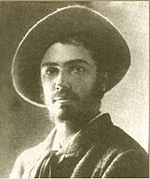How to Pronounce Adolphe Appia
#50
Most Popular
Boost
Sep 01, 1862 Geneva, Canton of Geneva, Switzerland Died on 29 Feb 1928 (aged 65)
Swiss architect (1862-1928)
VirgoAdolphe Appia, Date of Birth, Place of Birth, Family, Facts, Age, Net Worth, Biography and More in FamedBorn.com

Swiss architect (1862-1928)
Virgo